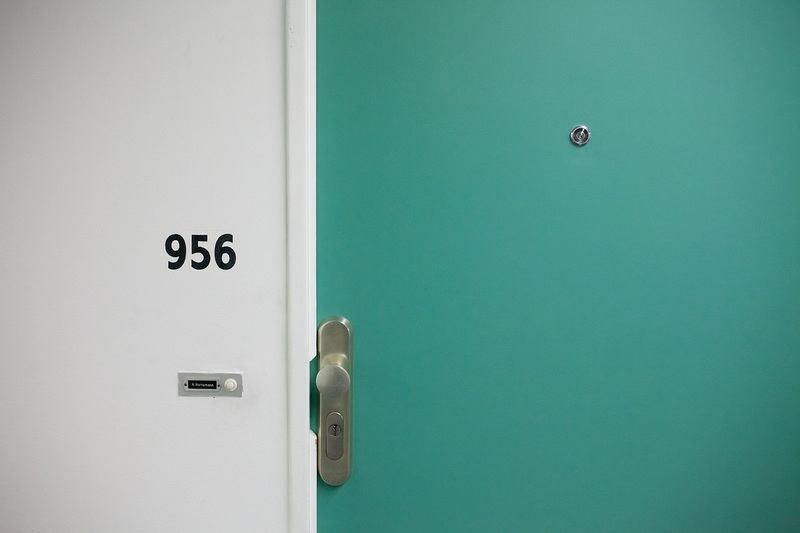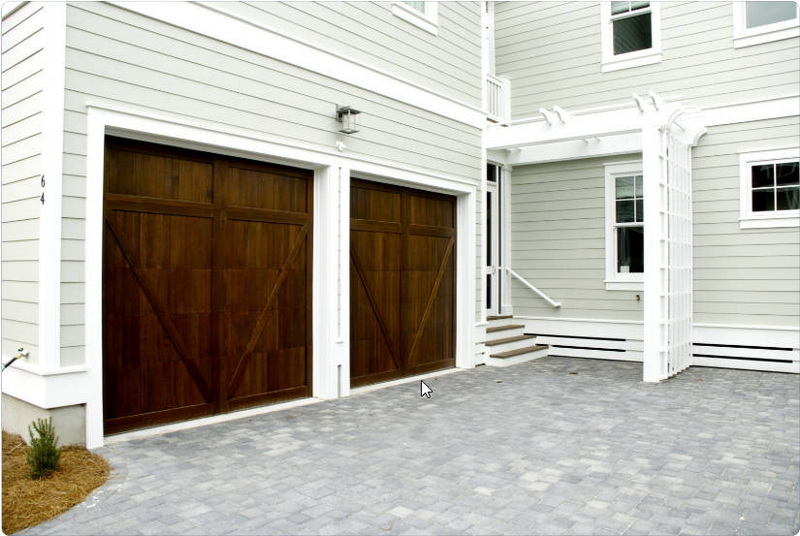English 







Content Menu
● Understanding Aluminum Doors
>> Common Issues with Aluminum Doors
● Tools Required for Adjusting Aluminum Doors
● Step-by-Step Guide to Adjusting an Aluminum Door
>> 6. Replace Weatherstripping
● Detailed Adjustment Techniques for Different Types of Aluminum Doors
>> Adjusting Hinged Aluminum Doors
>> Adjusting Sliding Aluminum Doors
>> Adjusting Bifold Aluminum Doors
● Maintenance Tips for Aluminum Doors
● Additional Considerations for Aluminum Door Maintenance
>> Addressing Dents and Scratches
>> Preventing Rust and Corrosion
>> Enhancing Energy Efficiency
● FAQ
>> 1. How often should I adjust my aluminum door?
>> 2. What should I do if my aluminum door won't close?
>> 3. Can I replace weatherstripping myself?
>> 4. What type of lubricant should I use on my aluminum door?
>> 5. Is it necessary to hire a professional for adjustments?
Aluminum doors are a popular choice for both residential and commercial properties due to their durability, aesthetic appeal, and low maintenance requirements. However, over time, these doors may require adjustments to ensure they function properly. This article will guide you through the process of adjusting an aluminum door, covering common issues and providing step-by-step instructions.

Before diving into adjustments, it's essential to understand the components of aluminum doors. These doors typically consist of:
- Frame: The structural element that supports the door.
- Hinges: Allow the door to swing open and closed.
- Weatherstripping: Seals gaps to prevent drafts and moisture.
- Locking Mechanism: Ensures security when the door is closed.
Aluminum doors can experience various issues that may require adjustment:
- Misalignment: The door may not close properly or may stick.
- Sagging: Over time, the weight of the door can cause it to sag, affecting its operation.
- Loose Hinges: Hinges may become loose, leading to misalignment.
- Worn Weatherstripping: This can cause drafts and reduce energy efficiency.
Before you begin adjusting your aluminum door, gather the following tools:
- Screwdriver (flathead and Phillips)
- Allen wrench (if applicable)
- Level
- Measuring tape
- Lubricant (for hinges)
- Replacement weatherstripping (if needed)
Start by inspecting the door for any visible issues. Check for gaps between the door and frame, signs of sagging, or loose hinges. Use a level to determine if the door is plumb (vertically straight).
If you notice that the hinges are loose:
- Use a screwdriver to tighten the screws on each hinge.
If the screws are stripped, consider replacing them with longer screws for a more secure fit.
If tightening does not resolve misalignment:
- Most aluminum doors have adjustable hinges that allow for vertical and horizontal adjustments.
To adjust:
- Locate the adjustment screws on the hinges.
- Use an Allen wrench or screwdriver to turn these screws clockwise or counterclockwise as needed.
For vertical adjustments, raising or lowering the hinge will help align the door properly. For horizontal adjustments, moving the hinge left or right will correct any lateral misalignment.
If your door is sagging:
- Look at the top of the door to see if it's higher on one side than the other.
To correct sagging:
- Adjust the top hinge upward by turning its adjustment screws.
If necessary, also adjust the bottom hinge in the opposite direction to maintain balance.
After adjusting hinges, check if the door aligns with the strike plate (the metal plate where the lock latches).
If it doesn't align:
- Loosen the screws on the strike plate and reposition it as needed.
Tighten screws once aligned correctly.
If your weatherstripping is worn or damaged:
- Remove old weatherstripping carefully.
- Clean any adhesive residue from the frame.
To install new weatherstripping:
1. Measure and cut new strips to fit each side of the door.
2. Press adhesive-backed weatherstripping into place or use nails for non-adhesive types.
To ensure smooth operation:
- Apply lubricant to all moving parts of the hinges.
This will prevent squeaking and allow for easy opening and closing.
Once all adjustments are made:
- Open and close the door several times to ensure it operates smoothly without sticking or dragging.
Use a level again to confirm that everything is aligned correctly.
Aluminum doors come in various styles, including hinged doors, sliding doors, and bifold doors. Each type requires specific adjustment techniques tailored to its design.
Hinged aluminum doors are common in residential settings. If you encounter issues such as misalignment or sagging:
1. Check Alignment: Use a level to check if the door is plumb.
2. Tighten Hinges: Ensure all hinge screws are tight.
3. Adjust Hinge Position:
- Locate adjustment screws on each hinge.
- Use an Allen wrench to make necessary adjustments until aligned properly.
4. Test Functionality: Open and close several times to ensure smooth operation without binding.
Sliding aluminum doors can experience issues like sticking or difficulty in sliding due to dirt accumulation or misalignment:
1. Inspect Tracks: Clean any debris from tracks using a vacuum or damp cloth.
2. Check Rollers: Ensure rollers at the bottom are functioning correctly; replace them if worn out.
3. Adjust Roller Height:
- Locate roller adjustment screws at the bottom of each sliding panel.
- Turn clockwise to raise or counterclockwise to lower until sliding smoothly.
4. Test Operation: Slide open and closed multiple times after adjustments.
Bifold doors require unique considerations due to their folding mechanism:
1. Identify Issues: Check if any panels bind or do not close properly.
2. Adjust Lead Door:
- Start with adjusting the lead bifold door by pulling it into position against its frame.
- If it binds, make horizontal adjustments using an Allen key at hinge locations.
3. Hinge Bolt Adjustment:
- Extend or push hinge bolts on each panel for height adjustments.
- Experiment with minor adjustments until all panels align correctly without dragging on tracks.
4. Final Testing: Open and close all panels together to ensure they operate smoothly without sticking.

To prolong the life of your aluminum door and minimize future adjustments:
- Regularly inspect hinges and tighten them as necessary.
- Clean aluminum surfaces with mild soap and water to prevent corrosion.
- Lubricate hinges every few months or as needed.
To ensure your aluminum doors remain functional and aesthetically pleasing over time, consider implementing a regular maintenance routine. Here are some additional tips:
Aluminum doors can accumulate dirt and grime over time. To maintain their appearance:
- Clean regularly with mild soap and water.
- Avoid using harsh chemicals that can scratch or damage the surface finish.
The hardware on aluminum doors—handles, locks, and hinges—can wear out with frequent use. To keep everything in working order:
- Check handles for looseness and tighten screws as necessary.
- Inspect locks for smooth operation; lubricate them at least once a year with graphite or Teflon-based lubricant.
Accidental collisions can lead to dents or scratches on aluminum doors. Here's how to address minor damages:
1. For small scratches:
- Use touch-up paint that matches your door's finish.
- Apply it carefully with a fine brush and allow it to dry completely.
2. For dents:
- If minor, you can often push them out from behind if accessible.
- For deeper dents, consider using a filler compound before repainting.
Although aluminum is resistant to rust, it can still corrode under certain conditions:
- Regularly inspect your doors for signs of corrosion.
- If corrosion appears, remove it with fine sandpaper and apply a protective sealant or paint as needed.
To improve energy efficiency:
- Ensure that weatherstripping is intact and functioning properly.
- Consider adding thermal breaks if you live in an area with extreme temperatures; this helps reduce heat transfer through aluminum frames.
Adjusting an aluminum door is a straightforward process that can significantly enhance its functionality and longevity. By following these steps—tightening hinges, adjusting alignment, replacing weatherstripping, lubricating moving parts—you can ensure your aluminum door operates smoothly for years to come. Regular maintenance checks will help you catch any issues early before they require more extensive repairs.
Implementing these practices not only keeps your doors in optimal condition but also contributes to energy efficiency in your home or business environment. With proper care, your aluminum doors will continue to provide security and aesthetic appeal while standing up to daily use.

It's advisable to check your aluminum door every six months for alignment and wear on hinges or weatherstripping.
If your aluminum door won't close, check for loose hinges first. If they are secure but misaligned, follow adjustment steps outlined above.
Yes! Replacing weatherstripping is a simple DIY task that involves removing old strips and applying new ones according to measurements taken from your door frame.
Use a silicone-based lubricant or a light machine oil specifically designed for use on metal surfaces to avoid attracting dirt.
Most adjustments can be done by homeowners with basic tools; however, if you're uncomfortable performing these tasks yourself or if significant damage exists, hiring a professional may be wise.
[1] https://www.supplyonlydoors.com/help-and-advice/aluminium-bifold-door-hinge-adjustment/
[2] https://aluminiumwindows.co.uk/blog/top-tips-bifold-door-adjustment/
[3] https://amcaluminum.ph/common-door-problems/
[4] https://aprowin.com/aluminum-door-defects/
[5] https://www.youtube.com/watch?v=PnVmwExVCxE
[6] https://bifold-doors-bristol.co.uk/how-to-adjust-an-aluminium-bifold-door-for-smooth-operation/
[7] https://esnaglass.com/aluminum/commercial-aluminum-door-repair/
[8] https://www.gm-cx.com/how-to-adjust-aluminum-door.html
[9] https://www.youtube.com/watch?v=EwyMbfPh8Ig
[10] https://www.cdfdistributors.com/learn-how-to-perfectly-adjust-your-commercial-door-closer/
Top Aluminum Furnitures Manufacturers and Suppliers in Czech Republic
Top Aluminum Furnitures Manufacturers and Suppliers in Poland
Top Aluminum Furnitures Manufacturers and Suppliers in Belgium
Top Aluminum Furnitures Manufacturers and Suppliers in Finland
Top Aluminum Furnitures Manufacturers and Suppliers in Denmark
Top Aluminum Furnitures Manufacturers and Suppliers in Greece
Top Aluminum Furnitures Manufacturers and Suppliers in Portugal
Top Aluminum Furnitures Manufacturers and Suppliers in Austria
Top Aluminum Furnitures Manufacturers and Suppliers in Norway
Top Aluminum Furnitures Manufacturers and Suppliers in Sweden
